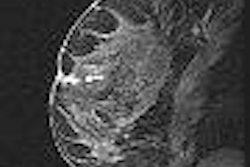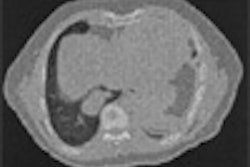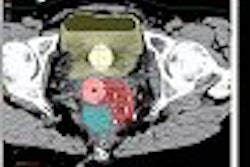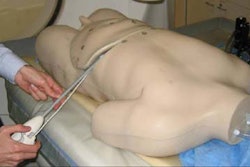Performing both transesophageal ultrasound-guided fine-needle aspiration (EUS-FNA) and mediastinoscopy can identify more tumor invasion or lymph node metastases than either approach on its own for preoperative lung cancer staging, according to an article in the August 24 issue of the Journal of the American Medical Association.
To investigate whether EUS-FNA could add additional value to mediastinoscopy in this application, a team of researchers from the Netherlands performed a prospective, nonrandomized multicenter trial at one referral and five general hospitals (JAMA, August 24/31, 2005; Vol. 294, pp. 931-936).
The research covered 107 consecutive patients with potentially respectable non-small cell lung cancer (NSCLC) between 2000 and 2003. All patients received preoperative staging by both EUS-FNA and mediastinoscopy.
If mediastinoscopy was negative, the patient underwent thoracotomy with tumor resection. The researchers compared surgical-pathological staging with preoperative findings, then assessed the added benefit of the combined strategy.
The combined approach identified 36% of the patients with tumor invasion or lymph node metastases, compared with 20% for mediastinoscopy alone and 28% for EUS-FNA alone. EUS-FNA detected advanced disease in 16% of patients with a negative mediastinoscopy by assessing lymph node metastases in 9%, mediastinal tumor invasion in 4%, and both mediastinal tumor invasion and lymph node metastases in 3% of patients.
"This indicated that 16% of the thoracotomies could have been avoided by using EUS-FNA in addition to mediastinoscopy," the authors wrote. "However, 2% of the EUS-FNA results were false-positive."
This study demonstrates that preoperative staging by EUS-FNA in addition to mediastinoscopy identifies more patients with either mediastinal tumor invasion or lymph node metastases, according to the authors.
"The results can be explained by the fact that EUS-FNA and mediastinoscopy have a complementary reach in assessing regional lymph node stations and in the ability of EUS-FNA to detect mediastinal tumor invasion," the researchers wrote. "If the EUS-FNA results had been taken into account in the present study, a thoracotomy could have been avoided in one of six patients. Our findings are directly applicable to clinical practice."
The authors cautioned that mediastinoscopy and EUS-FNA have inherent limitations, and should be viewed as complementary in regional staging of NSCLC.
"These preliminary findings suggest that EUS-FNA, a novel, minimally invasive staging procedure for lung cancer, may improve the preoperative staging due to the complementary reach of EUS-FNA in detecting mediastinal lymph node metastases and the ability to assess mediastinal tumor invasion," the authors concluded. "However, the occurrence of false-positive EUS-FNA findings in selected cases needs to be further investigated."
By Erik L. Ridley
AuntMinnie.com staff writer
August 23, 2005
Related Reading
PET/CT provides cost-savings for NSCLC radiotherapy, July 4, 2005
Vitamin D status may predict overall survival in early NSCLC, April 20, 2005
CT, PET staging may negate need for mediastinoscopy in lung cancer, April 11, 2005
Routine CT screening may not reduce mortality from lung cancer, May 24, 2005
PET/CT planning allows for greater gamble on NSCLC radiotherapy, March 16, 2005
Copyright © 2005 AuntMinnie.com



















